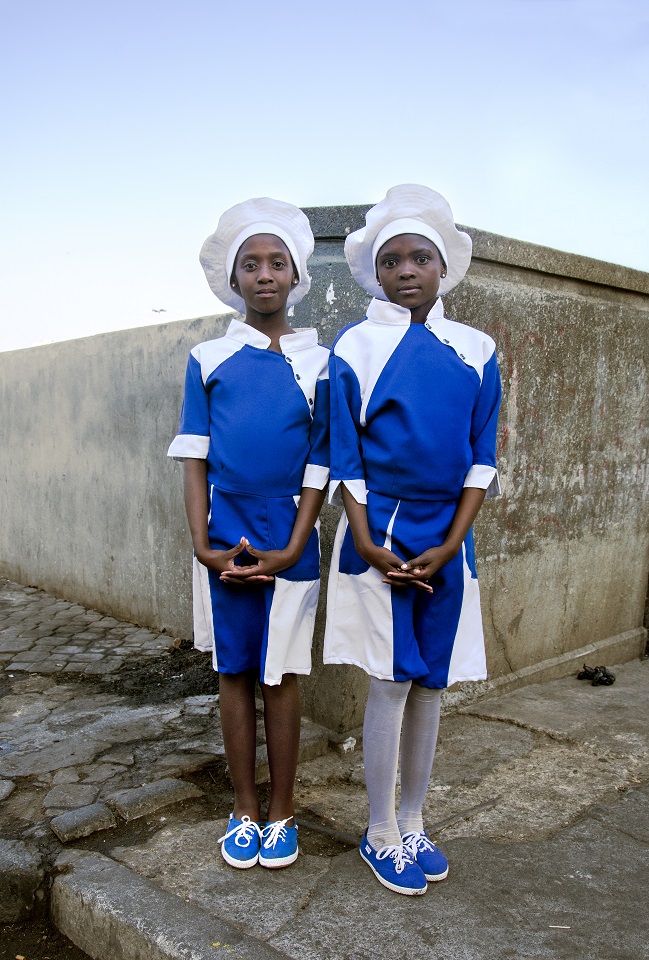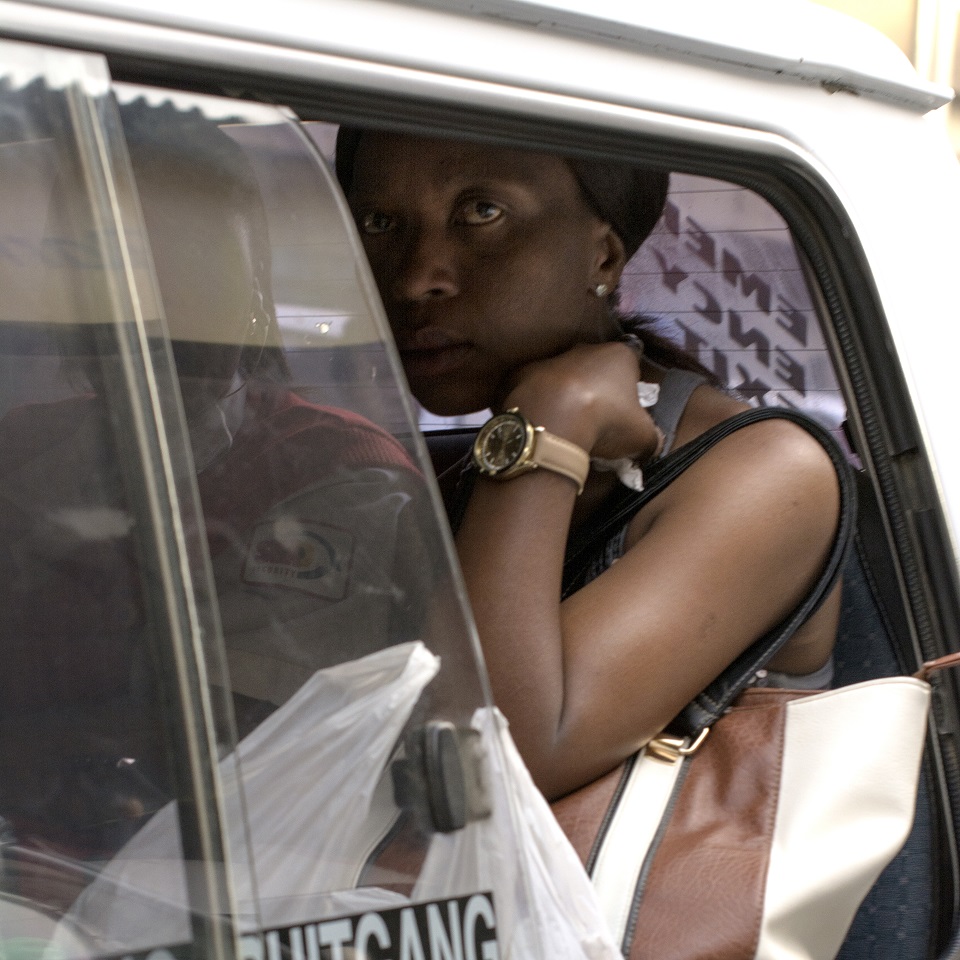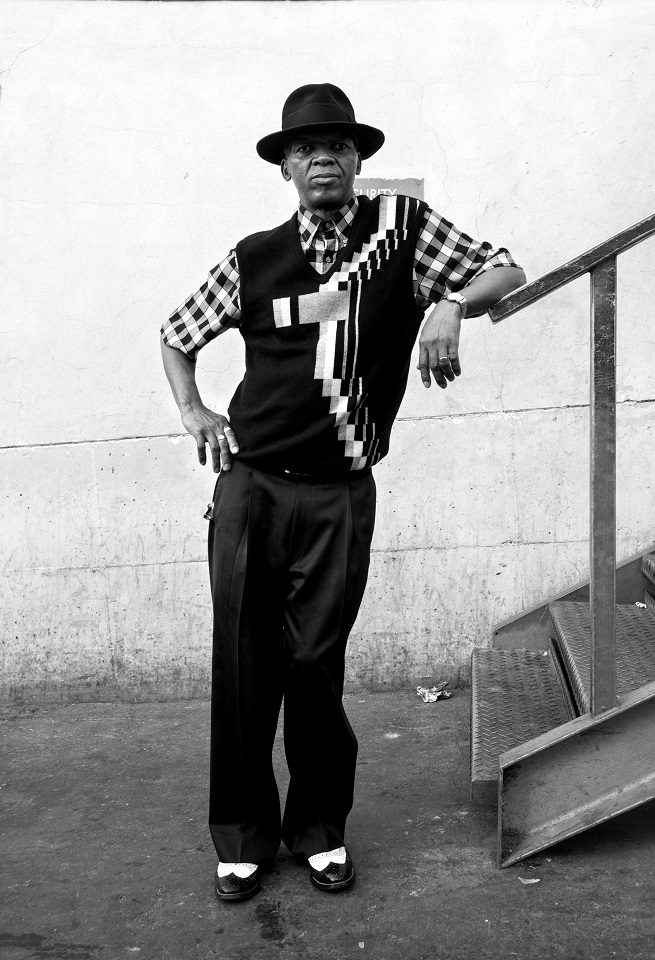Masixole Ncevu creates work in charcoal and video, but his photography is taking centre sage at the moment. Having moved to Johannesburg from Cape Town last year, he has been photographing the sprawling metropolis and the vibrant characters that inhabit it. I interviewed him about how his move to Johannesburg has allowed him to embrace colour photography, and work on putting a book together.
You work in charcoal and video as well but your photography seems to be taking centre stage at the moment. Could you share more about your relationship with photography and how it has evolved?
Having been fascinated by black and white photography from an early age, I prefer to use charcoal for my drawings. My style is heavily influenced by my love for human figures and by my own emotions. Whether I draw a close up or full portrait, I immensely enjoy the creativity and freedom of expression that comes with it. My love for video/short films comes from me continuously trying to challenge myself to find different ways of creating and enhancing the visual impact of my work. For me whether or not I succeed in that it is up to the subjective responsiveness of the viewer but the process of getting there is worth all the hard work and that for me is both deeply therapeutic and emotional.
You also recently moved to Johannesburg from Cape Town. Could you please share more about the decision to do so and how this has affected your artistic practice?
I felt the need to challenge myself because I was starting to feel too comfortable with the familiarity of Cape Town. I’m really passionate about traveling and Johannesburg is the beginning of that journey. I chose Johannesburg because it is the melting part of cultures and traditions and it is the gateway to Africa. I’ve always been interested in fashion and the move to Johannesburg has also created a shift in my work from black and white documenting, to embracing colour photography, as a means to express the vibrancy of Johannesburg’s street fashion.
You are working on a book at the moment. Could you please share more about what the book will contain and how you have made progress with it so far?
I’m treating the book as a work in progress. My intention for the book is to be a portrait of Johannesburg but the exact nature of the book will reveal itself as the work progresses.
I have been looking at the work you have been sharing on Tumblr. Are these images part of what will be included in your book? Or are these separates series?
It maybe a collection of photographs from the projects or I may end up choosing one of the projects that I feel represents Johannesburg in more a powerful way.
I noticed that a lot of your photographic projects are works in progress. Is this a reflection of how you work and how you approach your photography?
When I start a project/series I don’t immediately think ‘OK this is my next big project/series’. I just use photography as a way to investigate something that holds my interest. I respond to things I feel moved by or that I feel politicized by. Sometimes it works itself into a project/series, sometimes it doesn’t. I treat all of my projects as works in progress, and keep exploring them until I feel that I have told the story in a meaningful way.
You have quite a few projects that you have been working on this year which I have seen on your Tumblr. Could you share more about your series “Sunday Street”? Where did the inspiration for this come from?
I find peoples spiritual believes to be a fascinating part of the human condition. I’m interested in exploring how different people express their faith and I’m particularly in interested in how people in Johannesburg mix their western Christian beliefs with their traditional ancestral practice. So initially what drew me to make this photograph was their striking church clothes.

Could you share more about your series “Back seat”?
In Cape Town my primary means of public transport were trains but since moving to Johannesburg I’ve been using taxis as a means of exploring the city. The scenes I was experiencing while using taxis reminded me of the work of Micheal Wolf from the project ‘Tokyo compression’. My interest was sparked when I witnessed two passengers fighting for the back seat and it made me wonder why that seat was a hot property.

Could you share more about your series “Trousers”?
Johannesburg has a rich history of Pantsula, Swankas and Omashesha, a style taken from the ’60s and ’70s associated with gangsters and street dancers. Since I’ve always been interested in street fashion moving to Johannesburg has given the opportunity to explore the style.

What is particularly interesting is how you have chosen to pair/group your images on your Tumblr and website. Could you share a bit more about these choices?
I intentionally group my images in order to create a visual link between them, so that they can tell a complete story. When I present an image on its own, I do so when it tells a story on its own.
Is there anything specific that readers should look out for from you this year?
I’m participating in a group exhibition in Nimes, France (Nov 2017 – Feb 2018) with a photography gallery called NegPos. There is also a possibility of a group exhibition in London on the horizon (October 2017) but I will keep people posted on all my social media.



















































